The emergence of the dual-purpose, loose-surface-specialist, off-road performance car is one of the better reasons for enthusiastic drivers like us to be cheerful.
From the Porsche 911 Dakar and Lamborghini Huracán Sterrato right the way through to the Ford Ranger Raptor and Bowler Bulldog, we’ve had quite a constant and varied supply of these lovably rogue and madcap mud-pluggers over the past 10 years of car industry history.
And now, if you want to go fast and have fun on gravel and mud as well as on the road in 2025, you can do so in all kinds of different ways. Take, for example, the three fast off-roaders we have gathered at the Sweet Lamb Motorsport Complex in Wales for what should be a fantastic day of testing. They are, respectively, appealingly little, usably mid-sized and unapologetically large. Hobbyist, daily driver and indomitable do-it-all.
We’ve got rear-engined rear-wheel drive, all-electric four-wheel drive and V8-engined, proper mechanical four-wheel drive on offer, to suit whatever your requirement.
These cars are about as different from each other as anything you’re likely to see sharing space in an Autocar comparison test. But all should be great fun on what is ostensibly a gravel rally stage that’s ours for the day.
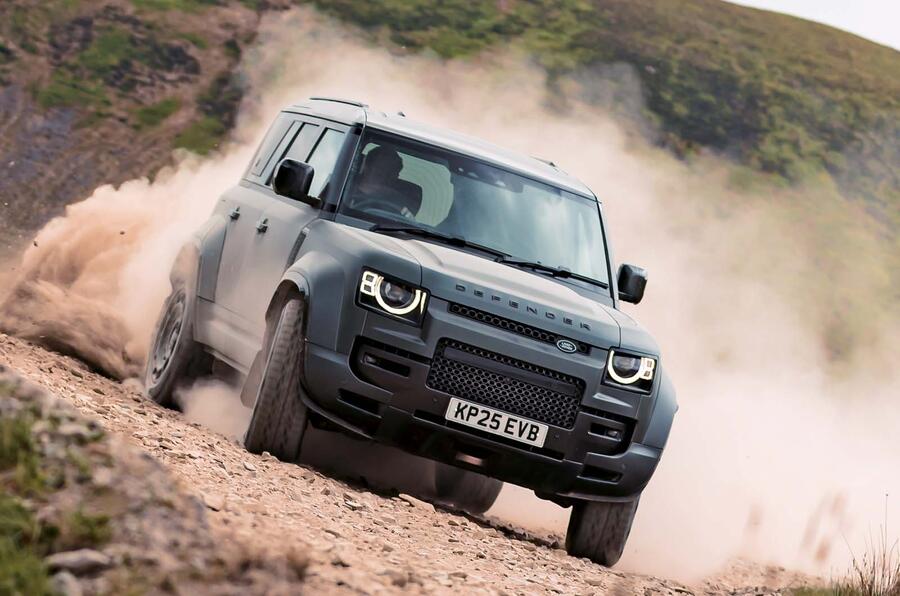
At just 715kg, the Ariel Nomad 2 is the kind of flyweight thrill-seeker most would stick on a trailer to transport and use. One towed by something like the 2510kg Land Rover Defender Octa, quite possibly. Could the tow car actually be as much fun as what’s towed? Could it get close? Let’s see.
At 2343kg, meanwhile, the Ford Mustang Mach-E Rally isn’t far behind the range-topping Defender on kerb weight, although it comfortably beats it for torque-to-weight ratio and claimed on-asphalt 0-62mph sprinting – not least because it’s electric. On wheel travel, any-surface traction and towing capacity? Not so much.
Sweet Lamb’s dark side
So, we have spaceframe construction and motorsport-grade long-travel passive suspension here, up against just about the cleverest and most versatile interlinked active air suspension that a global car manufacturer can come up with.
The niche-industry Nomad probably cost less to develop, from clean sheet to finished product, than JLR spent on the Octa’s 6D Dynamics interlinked hydraulic damper system alone. Meanwhile, the Mach-E Rally is, on the face of it, just a £2250 option on an existing performance EV.
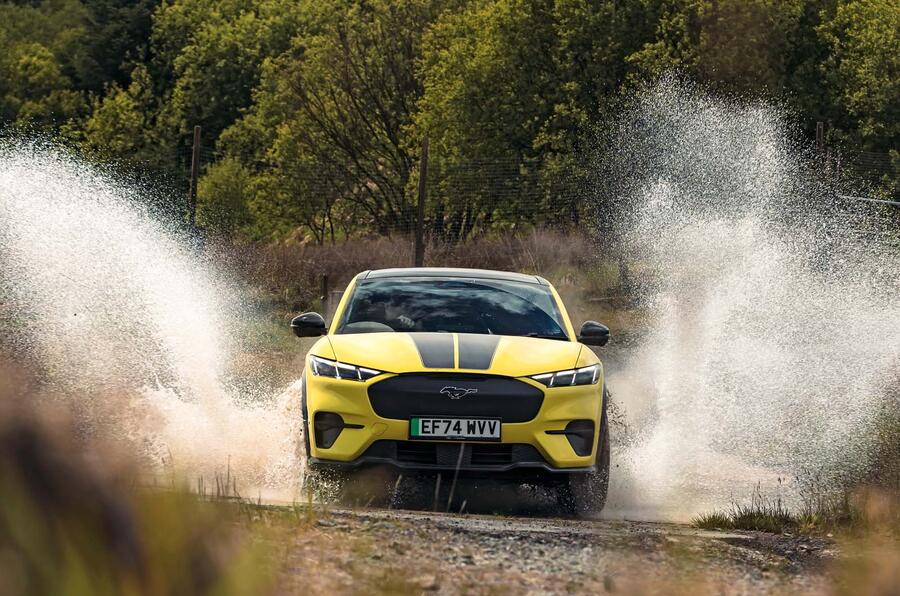
Some retuned dampers, longer coil springs, white-faced alloy wheels, underbody protection panels and Michelin CrossClimate 2 all-season tyres. How serious could that be?
Answers to all those questions and more will follow shortly after the nice man in the pick-up truck opens the gate on the steep, rutted and, in places, adversely cambered gravel playground. The bad news for the Defender, and to an extent the Mach-E, is that it’s fairly narrow, perhaps twice the width of a Nomad as an average but at points an even tighter squeeze.
The surface is sun-baked gravel and dirt, with plumes of drifting dust eddying up from it behind you as you drive, which the spring sunshine hits and beams through like rising flame. It’s a ‘loose’ surface in quite unforgiving terms.
The stones across it range in size from smaller than marbles to larger than cigarette packets – and, as stones do, they pile up on the outside of corners, making the grip ebb away just where you need it to come to your aid.
There are, in places, channels, holes and gullies to drop wheels into on the inside of those same corners – and not all of them will help you. There’s a tight hairpin bend with ruts deep enough to throw you offline and a roughly sheep-sized rock to stop you taking a wide line on entry.
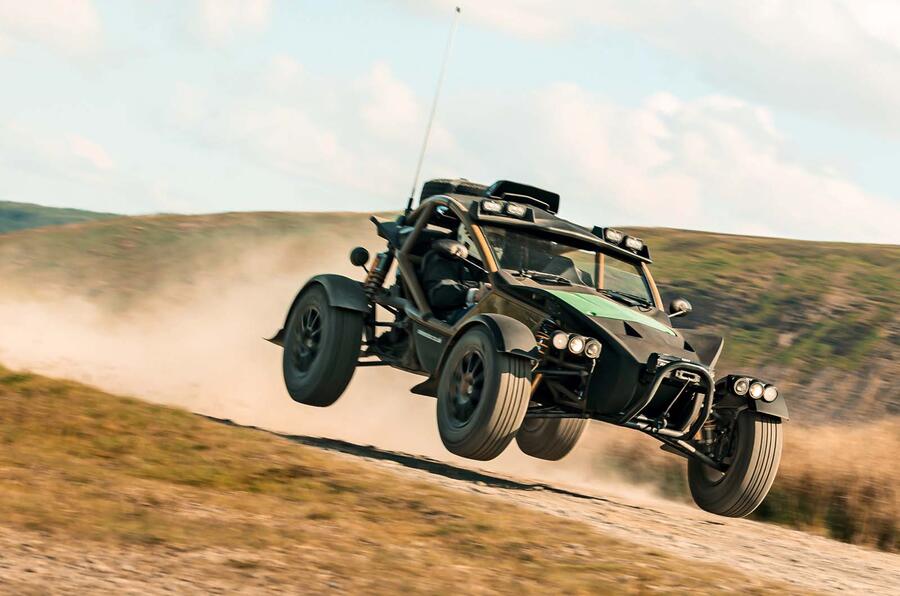
There are a couple of faster downhill, off-camber bends that will be unforgiving if you’re too quick going in (and, sooner or later in cars like these, you’re sure to be). There are sheer drops looming just beyond the margins of the ‘road’ in places. And there’s a jump. Of course there is.
It’s going to be something of a leveller, this place. Commitment will be needed to get very far into fourth gear even on the quickest stretches, so I’m not sure how much use 626bhp will be to the Land Rover, or even 480bhp to the Ford.
Accessible torque should go a long way, though, but only if it’s matched by proper gravel traction and stopping power.
Cars of many parts
The Defender Octa is the kind of big, heavy car that can take some serious punishment. You arrive in it at a place like Sweet Lamb, with its tracks, fields, streams and climbs in every direction, with not a flicker of unease.
That’s partly because your journey has already been so remarkably pleasant. The Octa takes to on-road motorway and A-road miles with very little compromise whatsoever to its rolling refinement associated with its beefed-up running gear – and big-hitting overtaking pace when you need it.
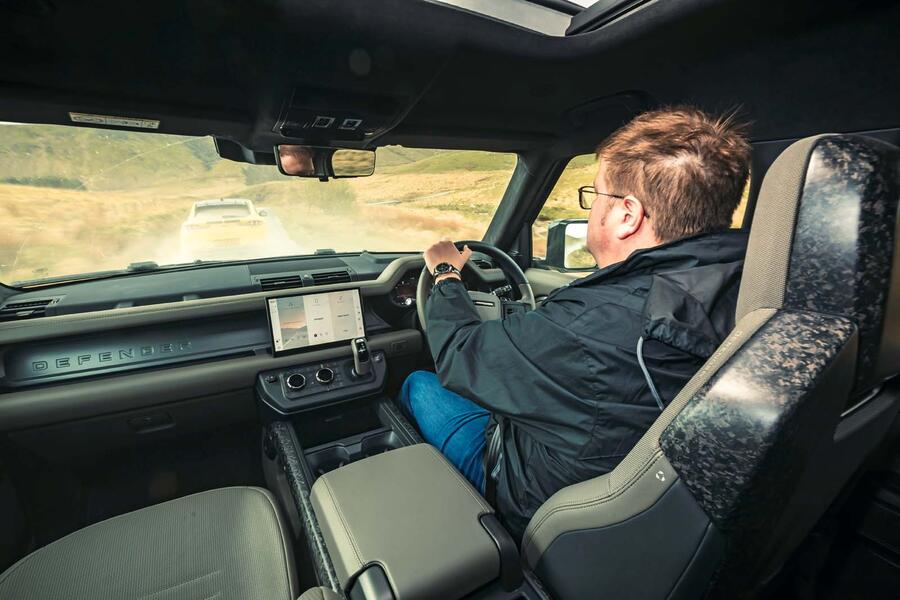
But it’s also because this car’s sheer rough-stuff capability is exceptional. We’ve had a dry winter, so it happens that the ford you have to cross to gain access to The Mile Loop is at a low level on the day of our test, and all three cars can cross it easily. But if it had been 18in deeper?
The Defender – with its 1000mm wading depth – would simply have had the fun all to itself, and the Nomad might have ended up somewhere a lot farther downstream in the Wye Valley.
Getting to where you want to be in order to enjoy yourself in fairly remote places like this, and carrying with you what you will need when you get there, is a significant part of the equation when assessing how much fun these cars can provide in the broadest of senses.
And on all of that stuff, the Defender has a mighty head start when you stop to think about it. Are usability and capability – or, rather, the want of them – significant hurdles for the electric Ford?
In some ways, I’d say so – but not all. The Mach-E GT wasn’t the most efficient EV you could spend £70,000 on before Ford jacked up the ride height by 20mm and fitted those all-season tyres to it.
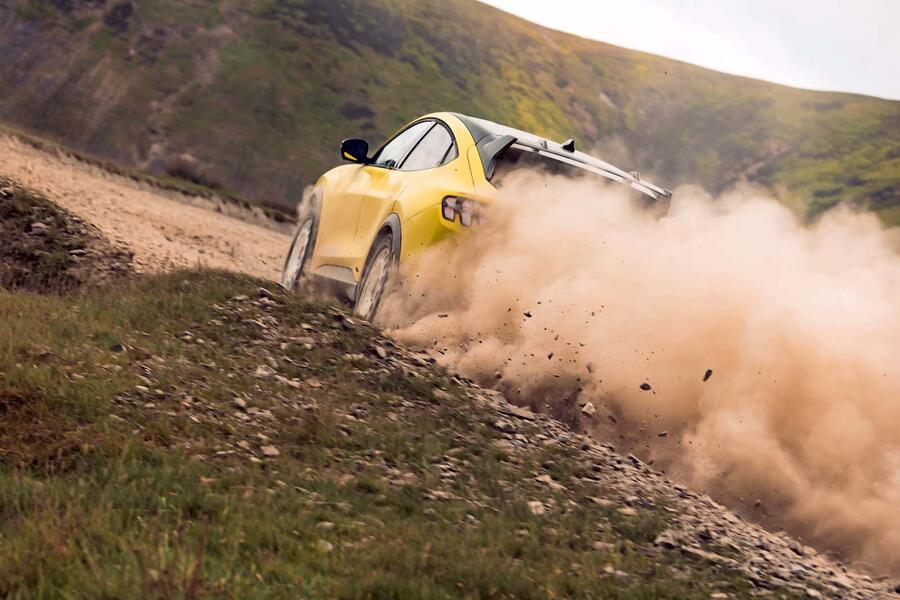
As the Rally, it will do a little over 210 miles as a touring electric range, which meant it arrived at our Welsh rallying idyll with about 75% battery capacity showing, with the nearest rapid charger a good 25 miles away.
Focuses the mind, that. I won’t be ruining the verdict, however, to tell you that the Mach-E survives a fairly long day’s off-road use, with a couple of leadfoots taking plenty of entertainment from it, and leaves at the end with more than enough range remaining to guarantee its onward progression.
As a very basic test of the primary usability of an EV made with this sort of driving in mind, I reckon that’s valid: and the Mach-E Rally passes it. But, at all points, we keep a wary eye on that range meter, in a way we simply don’t need to with the fossil-fuelled alternatives, and perhaps have just a little less outright fun as a result.
On a more normal day, of course, the Mach-E Rally is still a car you could get all manner of profitable, zero-emissions use out of. It’s practical but not huge; fast, alternative and interesting to drive but not a six-figure buying prospect. Suited to the school run, supermarket shop, office commute and football practice. It has five doors, five usable seats and Ford-typical real-world appeal baked right in.
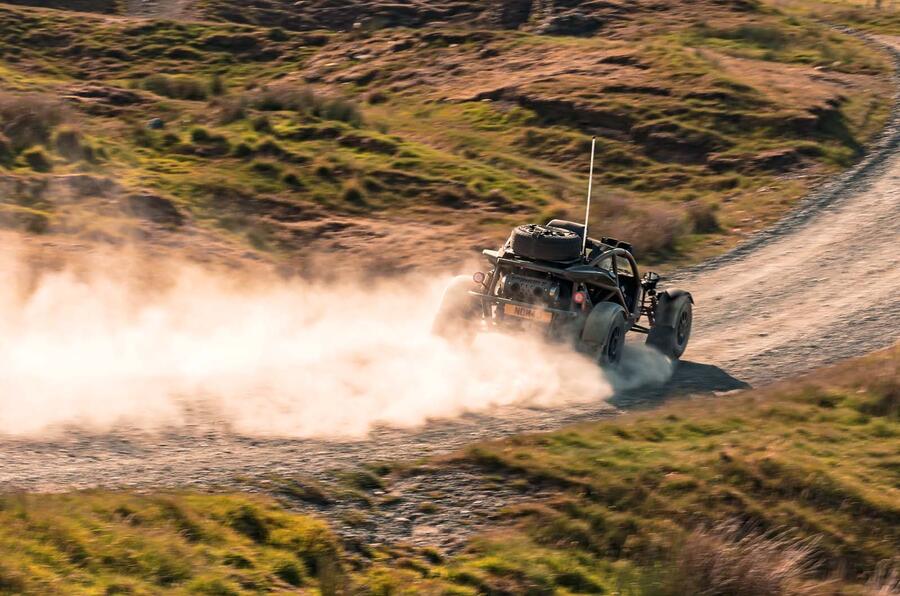
Need we point out that the Nomad, er, doesn’t? I doubt it, because it’s the kind of car you take giant helpings of enjoyment from on the more limited occasions you have to drive it, not the other way around.
The one with the green frame that Ariel brought to Sweet Lamb for us has Perspex side protection to stop the breeze billowing up your trouser legs so much, as well as a canvas roof as rain protection.
You expect to finish driving it by removing so much dust from your various facial orifices, but it actually shelters you from all that fairly well. Hit a water splash in it at pace, though, and… you get wet.
But generally, it doesn’t throw enough dirt into the cockpit to make you wish you had packed ski goggles or to make it a mission to clean up afterwards.
The Nomad may be the kind of car you would only really ever seek to have fun in, but what fun it is. You can have one with a rally-style hydraulic handbrake fitted if you want (as our test car has), in addition to the optional winch, roof-mounted headlights and gorgeous Öhlins TTX suspension – and, trust me, you should.
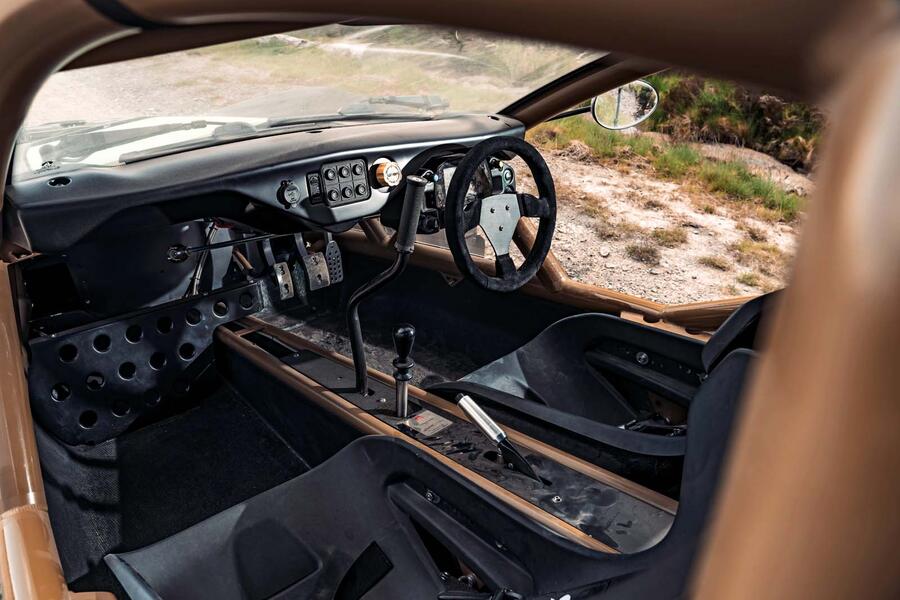
Crunch time
Onto the gravel we go, then. In descending order, 534lb ft of torque per tonne in the Ariel plays 271lb ft in the Ford and only 235lb ft in the Octa. Even there, you can start to see the enormous difference that the Nomad’s lightness makes.
But the proper all-terrain tyres of the Nomad and Octa will have an impact, too, versus the more road-intended rubber of the Mach-E, while peak torque at revs isn’t the same thing as accessible torque right under your big toe, right at the wheel where you need it most.
Is your idea of a fun gravel driving experience something pointy, drifty and responsive, which rotates freely as you turn it in and ‘gas it up’? Whose cornering attitude can be adjusted with power as quickly and easily as a flick of your ankle and roll of your wrists? S omething that powers away from 50mph corners with a real surge of urgency and a carefree wiggle of its hips?
Well, you might be surprised just how well the Mach-E Rally fits the bill. Being electric might actually make it more fun than it would otherwise be here. It’s lively and responsive to the controls at speeds that don’t make you fear for what’s waiting on the other side of the grass verge.
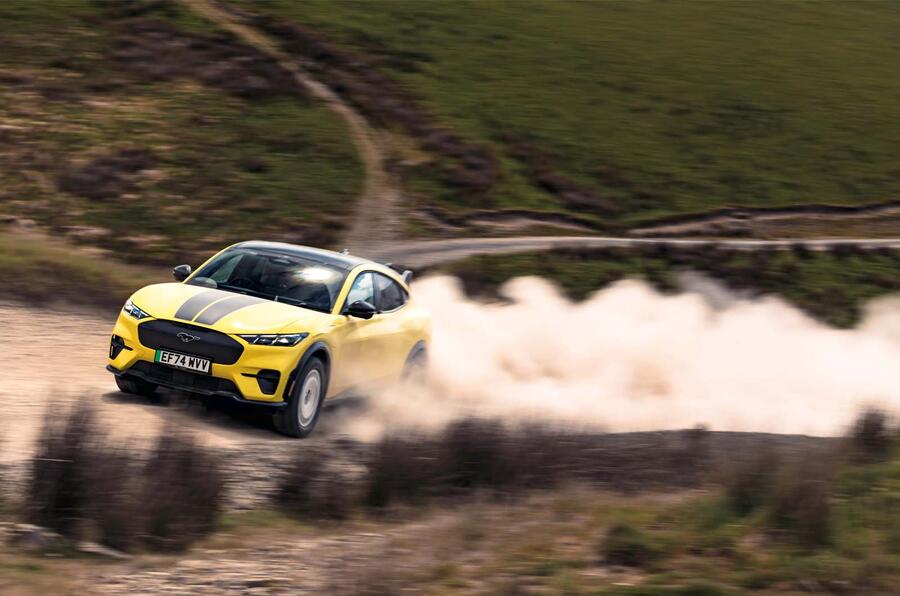
The bigger, more stable, more under-control-feeling Octa isn’t quite so lively. That’s partly a function of grip and partly of size. It has loads of grip on gravel, its Goodyear Wrangler Duratrac all-terrain tyres chewing through the surface scree and making it ready to pull bigger speeds than the confines of this circuit really allow something of its sheer size. It feels a bit like a monster truck on a Race of Champions stadium circuit.
The Mach-E’s all-season Michelins get to about 50mph, by contrast, and then start to skate around on the top layer of stones, their tread blocks failing to clear the rubble they’re bombarded with, and allowing the chassis’ naturally more expressive tendencies to start to become a liability.
So driving the Ford on gravel is a kind of quick-quick-slow progression; you will have a blast, provided you don’t go too fast. In the tighter bends, there’s nothing the Defender’s posh active suspension can really do, by comparison, about the more languid chassis responses of a bigger, taller, heavier car, but the Mach-E feels much lower, keener and more willing to be teased into a positive cornering attitude than the Land Rover, which only really wants to tuck its nose in under trail-braking (although it will certainly do it).
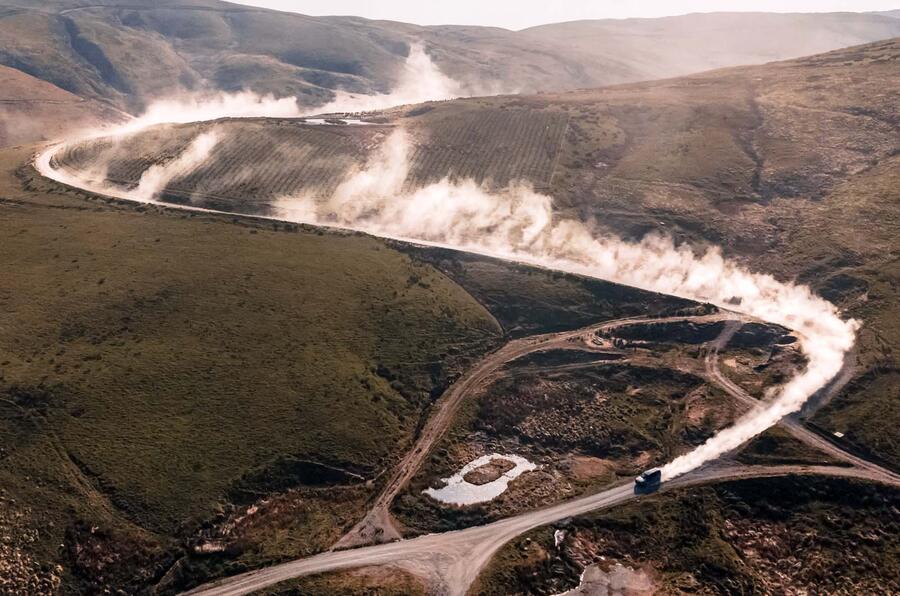
Both cars are fun. The Defender is leagues tougher and more capable and would come into its own on a quicker, wider gravel track, I’d wager. But here and now and in a corner of the Powys countryside that seems to suit it peculiarly well, the Ford is actually the more addictive driver’s car.
And then you get into the Nomad and it’s like you’re in another place altogether and engaged in an interactive physical act of a different order of magnitude. The Octa ultimately goes perhaps 10-15% further than a regular Defender for entertainment factor but still trades squarely on its assured feel.
It can only make so much room to really entertain you without the risk of bursting that safe, silver-lined bubble. The Mach-E goes further still, but its ultimate lack of grip, ground clearance and damping authority would make you fear for it if tougher, quicker surfaces and tests presented. But the Nomad simply yums it all up, lets you feel every little deflection and work for every correction, and puts itself on a different plane of motoring existence in the process. It is enormous, monumental fun.
It’s a test of nerve to begin with, though, and a huge change of tone. Because suddenly every channel, bump, ridge, rock and camber gets right through to your fingertips and backside. The Defender was filtering them out, mostly, although you didn’t know it; the Ford only hinting at them.
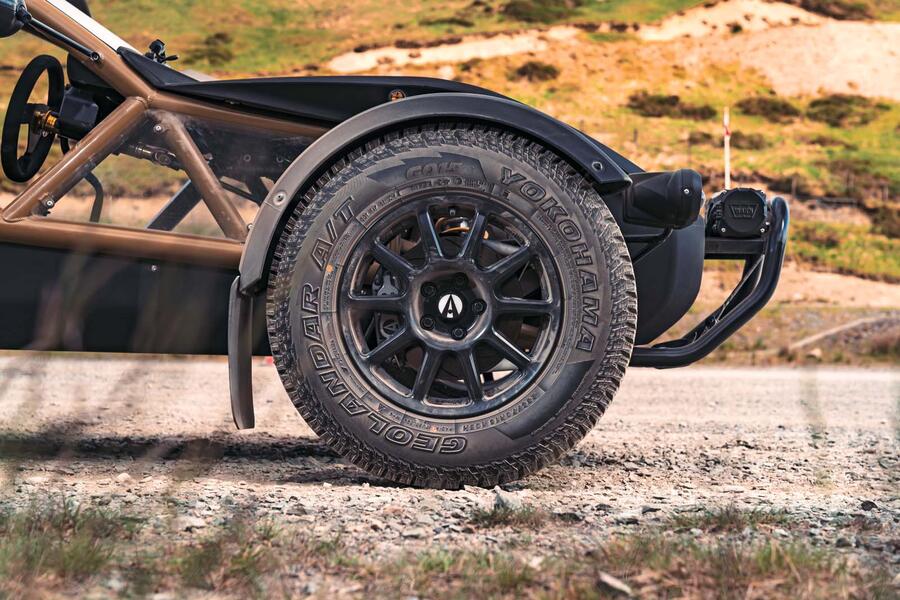
But the Nomad broadcasts them right into your forearms and shoulders. Lots of physical effort is involved in getting on its level and armfuls of corrective lock require plenty of fast dexterity.
But it gives back what you put in and more, with its incredible, oh-so-faithful handling. On 16in wheels and chunkily sidewalled Yokohama all-terrain tyres, it finds plenty of grip and traction on the gravel but still demands a much closer watching brief before you can let all 382lb ft loose through the rear wheels without a bodily reaction.
The steering communicates tirelessly, so you know without doubt when you’re on a good line and, very clearly, when you’re not. Get wide, get lazy, turn in in the wrong gear or fluff your lines with the pedals and you will have plenty to sort out. But drive well and you can take pretty much whatever line and angle through a third-gear, 50mph corner you want to and feel every move the chassis makes.
And the most awe-inspiring move is when it takes to the air. The jump on the Mile Loop isn’t a desperately quick one, but it is quite steep and severe. You wouldn’t risk what damage the Defender’s bulk could do to itself by jumping it there; even less the not-as-well-damped, shorter-travel Mach-E.
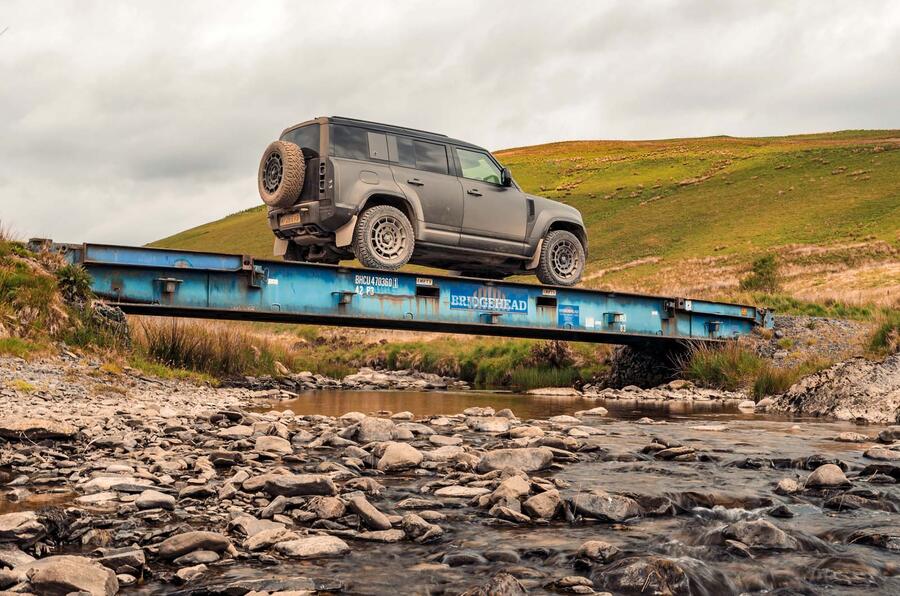
But the Nomad takes it like some magic flying La-Z-Boy armchair. It vaults like a gazelle but, thanks to that Öhlins suspension and its modest weight, comes back down to earth in a more comfortable, matter-of-fact way than you would ever believe possible.
And so you line it up again, just to check it wasn’t a fluke. The same way you do once you’ve found the perfect line through that tricky off-camber corner. And you don’t stop until you’re blowing and grinning in gloriously equal measure.
Cars this compelling may not play by the rules, but they’re absolutely worth making room, time, occasion and effort for. The Nomad vividly proves that if you really want to have fun off road, committing fully and putting the effort in truly pays off – and it does it in singularly superb fashion.
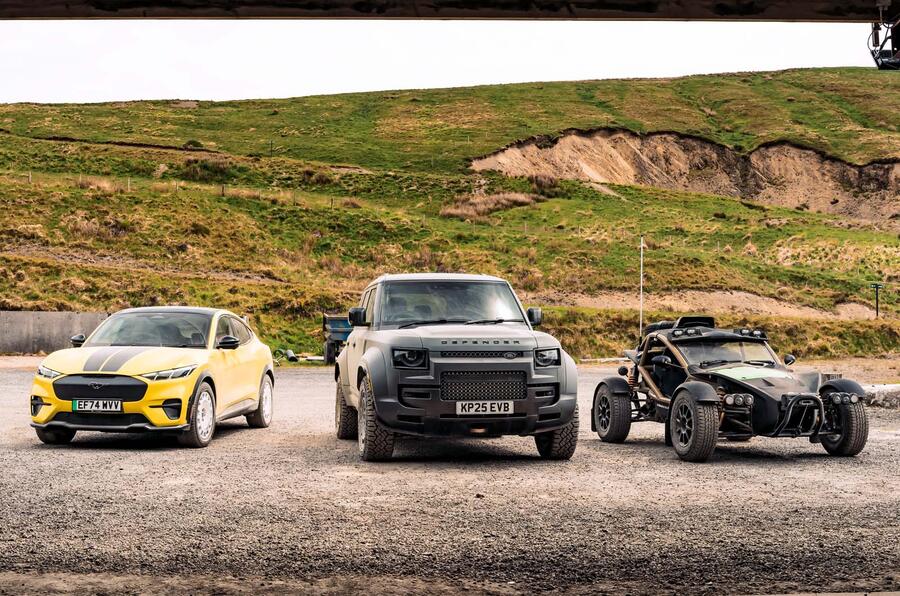
The Result
1st. Ariel Nomad 2
Has neither usability nor capability to worry about and feels superbly, vividly liberated as a result. Fun on the loose like just about nothing else.
2nd. Ford Mustang Mach-E Rally
A simple, direct and surprisingly effective way to enjoy yourself on gravel, although it lacks some toughness, stamina and true capability.
3rd. Land Rover Defender Octa
Would get you to almost anywhere there is fun to be had and with plenty of entertaining flourish. Needs a big canvas to really impress as a driver’s car, though.
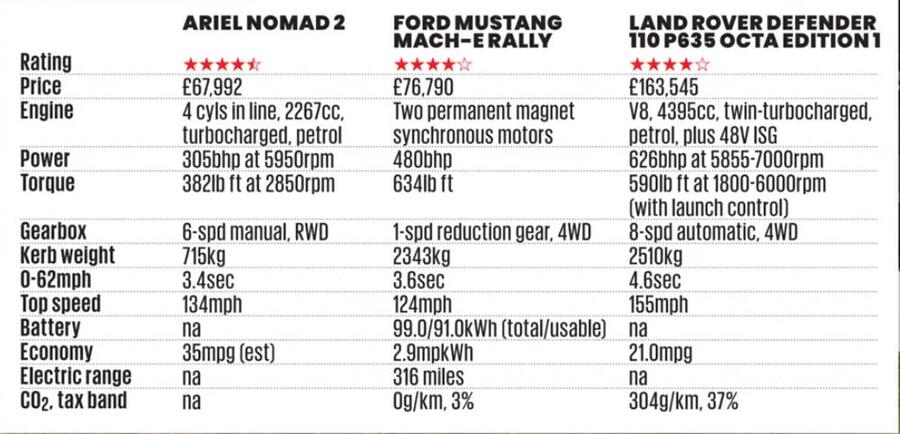

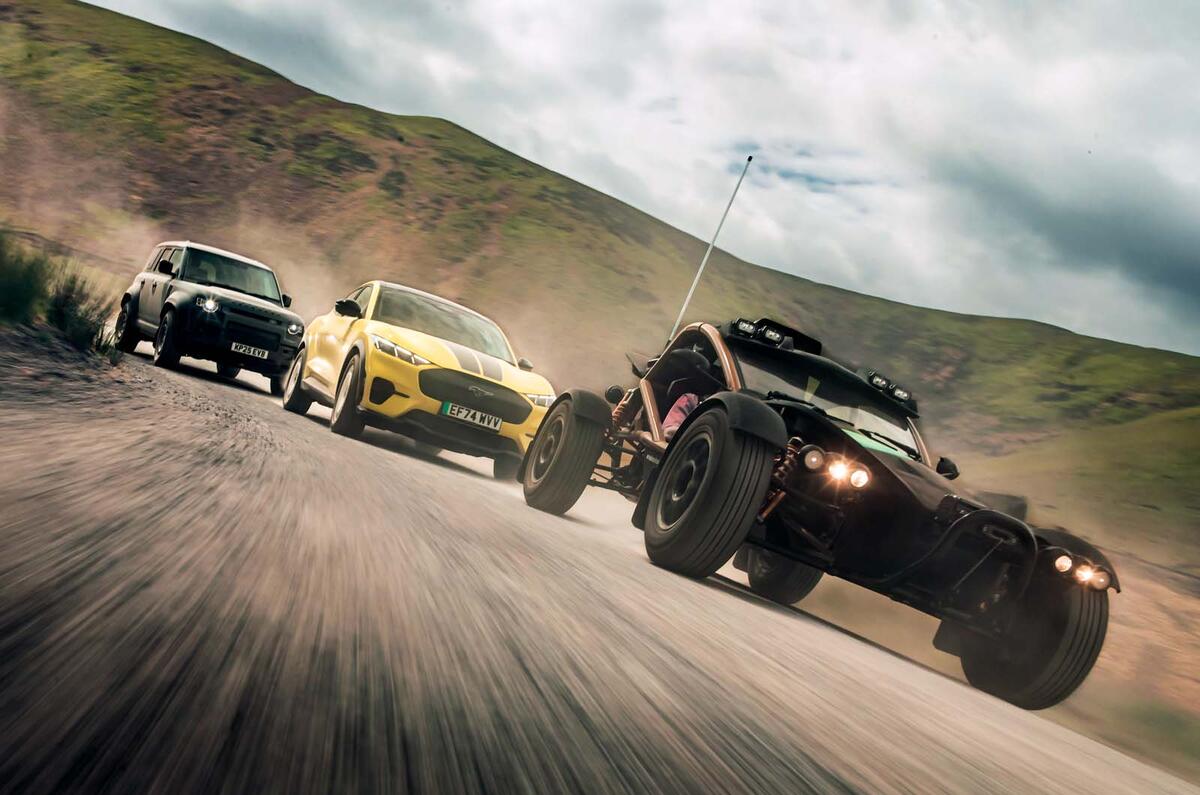






Join the debate
Add your comment
It's fascinating how manufacturers are blurring the lines between performance and practicality. The whole concept of mastering a car on loose surfaces reminds me a bit of playing Doodle Baseball. You know, you gotta time everything just right, and you definitely don't hit a home run every time! But each swing, each attempt, teaches you something new. It's all about that continuous learning curve and the satisfaction of finally nailing it. Thanks for sharing this!
I just came across this amazing way to earn $6,000-$8,000 a month online! No selling, no struggle—just a simple system that anyone can follow. Kelly Richards did it, and so can you! Don't miss out on this life-changing opportunity.
Follow Here ....... WorkStar1.com